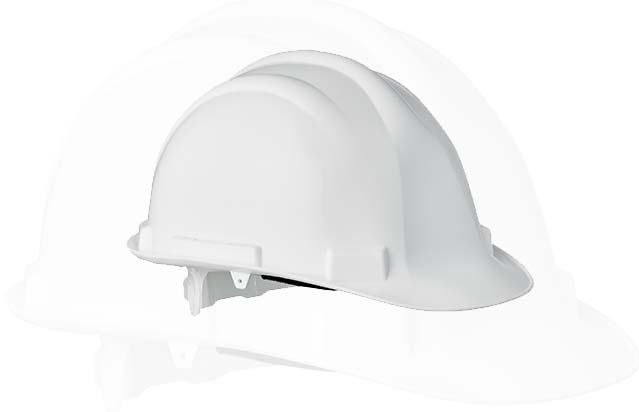On 6th April 2022 the Personal Protective Equipment at Work (Amendment) Regulations 2022 come into force, they amend the previous 1992 Regulations to extend employers' and employees' duties regarding personal protective equipment (PPE) to limb (b) workers. Information will guide employers through their extended responsibilities and obligations to help them to remain compliant.
The Personal Protective Equipment at Work (Amendment) Regulations 2022
The Personal Protective Equipment at Work Regulations 1992 State That
"Every employer shall ensure that suitable personal protective equipment is provided to his employees who may be exposed to a risk to their health or safety while at work except where and to the extent that such risk has been adequately controlled by other means which are equally or more effective."
The 2022 Update Extends Provision from Employees to Workers
The 2022 update to this regulation extends employers duties, in respect of PPE, from 'employees' to 'workers.' The definition of 'workers' now includes both employees (Limb a workers) and those with a more casual employee relationship or who work under contract (Limb b workers). Employees' duties have also been extended to workers.
These changes do not apply to those who have a 'self-employed' status.
Provision of PPE
Therefore, where an employer has undertaken a risk assessment and determined that PPE is required, they must ensure that suitable PPE is provided to workers and that there is no difference between the way that it is provided to employees and limb b workers.
Charging for PPE
The new 2022 update also amends the 1992 Regulations to extend the duty placed on the employer to not charge employees for PPE to include workers.
Enforcement
HSE inspectors will continue to include assessment of PPE as part of their routine inspections.
Where an employer has undertaken a risk assessment and finds PPE to be necessary to provide protection from a hazard, they have a duty to provide it to workers free of charge.
The 2022 update does not provide for any additional duties, but it extends existing obligations and requirements on employers and employees limb (b) workers:
Employers Must Provide PPE That Is:
- Suitable PPE where health and safety cannot be controlled by other means
- Compatible where two or more items of PPE are required to be worn together, they must be compatible with each other
- Maintained, cleaned or replaced when needed
- Correctly stored when not being used
- Provided with information, instruction and training to those required to wear it
- Correctly stored and workers must be instructed and trained in its use
For PPE Provided to Them, Workers Must:
- Ensure the PPE is used in accordance with the training and instructions they are given
- Take reasonable steps to ensure the PPE is returned to the storage/accommodation provided after use
- Report the loss or defect of PPE
Specification and Quality of PPE Provided
Whilst the legislation does not state that limb b workers has to be the same specification as limb (a) workers, the HSE does state:
"All PPE, regardless of whether provided to employees or limb (b) workers is required to meet relevant standards, which dictate the minimum requirements for that item of PPE."
"Manufacturers of PPE declare that these standards have been met through CE/UKCA marking of the PPE. If an employer provides limb (b) workers with PPE that does not have a CE/UKCA marking, the business will be in non-compliance and likely result in enforcement action."
Sources and Useful References
Products Most Likely to be Required for Limb B Workers
Some Useful Definitions
A Definition of PPE
The regulations define PPE as:
"all equipment (including clothing affording protection against the weather) which is intended to be worn or held by a person at work and which protects the person against one or more risks to that person's health or safety, and any addition or accessory designed to meet that objective"
The Employment Rights Act 1996
Definition of 'employee'
The legislation defines an employee as:
"an individual who has entered into or works under (or, where the employment has ceased, worked under) a contract of employment."
Definition of 'worker'
This legislation defines a 'worker' as an individual who has entered into or works under:
- contract of employment
- any contract, whether express or implied and (if it is express) whether oral or in writing, whereby the individual undertakes to do or perform personally any work or services for another party to the contract whose status is not by virtue of the contract that of a client or customer of any profession or business undertaking carried on by the individual and any reference to a worker's contract shall be construed accordingly...
Definitions of Limb (a) and Limb (b) Workers
There are two main employment statuses for employment rights: 'employee' and 'worker'. Employees are defined as limb (a) and workers are defined as limb (b)
Limb (a) describes those with a contract of employment. This group are employees under the Health and Safety at Work etc Act 1974 and are already in scope of the 1992 regulation.
Limb (b) describes workers who generally have a more casual employment relationship and work under a contract for service - they have not previously come under the scope of the 1992 regulation.
The 2022 update extends the definition of worker to include both employees and limb (b) workers:
General Duties of Limb (b) Workers
Generally, workers who come under limb (b):
- carry out casual or irregular work for one or more organisations
- after one month of continuous service, receive holiday pay but not other employment rights such as the minimum period of statutory notice
- only carry out work if they choose to
- have a contract or other arrangement to do work or services personally for a reward (the contract doesn't have to be written) and only have a limited right to send someone else to do the work, for example swapping shifts with someone on a pre-approved list (subcontracting)
- are not in business for themselves (they do not advertise services directly to customers who can then also book their services directly)









